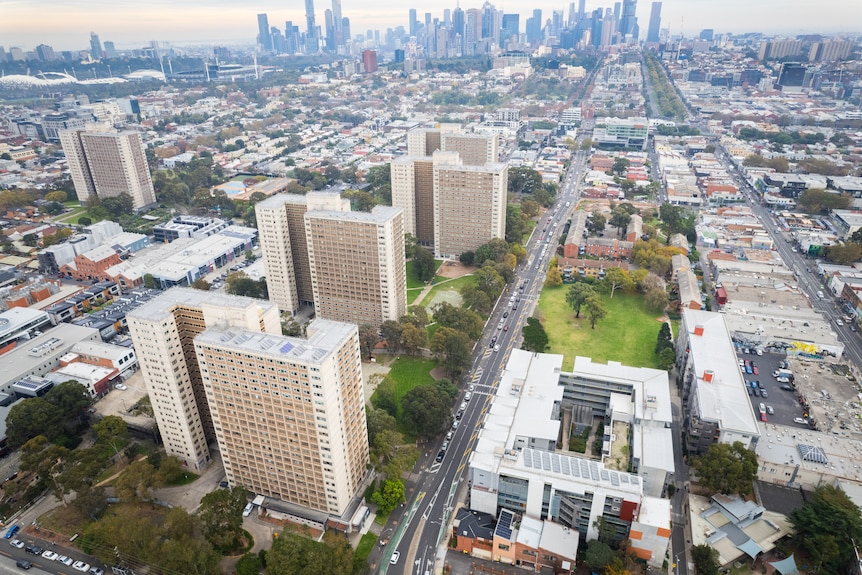As a thriving cultural hub and a centre for excellence in the arts, business and finance, Melbourne’s record of waste and recycling needs some work to improve outcomes.
Some areas need re-thinking and improving, and we’ve taken an in-depth look at Melbourne’s waste and recycling statistics so that readers can gain more insight into the current state of affairs.

Image credit: www.abc.net.au
How much waste is produced in Melbourne each year?
Every year, Melbourne produces around 3.3 million tonnes of waste. This includes residential and commercial waste in addition to construction and demolition waste.
Around 1.7 million tonnes of this is currently directed to landfill, with the remaining 1.6 million tonnes being recycled or treated.
Most of the waste produced in Melbourne comes from households.
How much of this waste is recycled?
In 2017-2018, only 25% of waste was recycled.
This is a very poor outcome, and in 2020, the State Government announced the Recycling Victoria Policy. The policy sets out minimum standards for residential waste and a timeline for implementing the changes.
The plan is to divert 80% of waste from landfills by 2030.
What are the most common items that are recycled?
Across Australia, including Melbourne, the most commonly recycled items are metals, including aluminium cans, plastic bottles and cardboard.
Aluminium cans are 100% recyclable, meaning no element of them needs to be removed or treated separately.
What are the most common items that are sent to landfill?
The most common items sent to landfills include building and demolition waste, food/organic waste, and textiles.
This is a big concern because the city has many retail outlets, food outlets and food production businesses, and the near-constant building of new homes.
How much waste is produced per person in Melbourne each year?
The volume of waste produced by each living in Melbourne varies. This is due to differences in lifestyle as well as income.
For example, in 2018-2019, the average person in Melbourne produced around 4.1 tonnes of waste, including household and commercial waste. This is higher than the national average of 3.5 tonnes per person.
How does this compare to other Australian cities?
As mentioned, Melbourne’s individual figures on waste production are higher than in other areas.
This could be due to the relative wealth of those living in Melbourne when compared to people living in more rural areas, in addition to the fact that Melbourne residents have a lot of retail opportunities.
What initiatives are in place to increase recycling rates?
Since 2015, Melbourne has invested $135 million in waste and resource recovery initiatives.
Melbourne has also set out clear goals working towards a circular economy, which is guided by four goals each spanning the life cycle of materials (make, reuse, recycle and manage).
Each of the goals is designed to maximise value and reduce waste.
What are the challenges associated with waste management in Melbourne?
For a circular economy to exist and succeed, all members of society must collaborate together.
This means businesses, individuals, and organisations work with the government to ensure the plan’s successful implementation.
It takes a very well-planned infrastructure and investment to ensure that the circle is never broken.
What are the costs associated with waste management?
The costs associated with successful waste management, which reduces waste and at the same time has little impact on the environment, are varied but mainly include –
- Education
- Planning
- Maintenance
- Transport
- Processing
- Storage

Image credit: www.theconversation.com
Environmental Impact
Currently, the environmental impacts of waste management are heavy. Damage to the environment, the wildlife and the air quality in Melbourne is a very real problem.
Reducing this impact as soon as possible is vital.
Waste and Recycling Trends in Melbourne
There is a big emphasis on the textile industry currently. Because Melbourne residents buy a lot of cheap clothing from foreign websites, there is a constant stream of poor-quality textiles into the city.
Many of these clothing items are made of fabrics that incorporate plastics, which are hard to recycle. Efforts are being made to encourage people to shop locally, to buy second-hand clothing and to avoid fast fashion outlets.
Final thoughts and key takeaway
Melbourne’s leaders are working hard to make big changes in the coming decade. If residents and business owners work alongside them, then the figures for Melbourne’s waste management will look very different by 2030.
Making small changes in your own lifestyle and changes in the workplace will all contribute to a healthier future for us all.
What can I do about it?
There are many things we can all do about the current issues that Melbourne faces.
Firstly, recycling begins at home – make use of your council bins and use them correctly. Putting plastics and other recyclable items in the recycling bin and green waste in the organics bin. The less waste you put in your general waste bin, the better. This is the bin that goes to landfill.
In addition, utilising solutions like skip bin hire is a sensible option to take as well as an eco-friendly one.
Moving house, renovating and building all create waste. If you find yourself dealing with more waste than your council bins can cope with, consider hiring a skip.
The best skip bin companies in Melbourne will deliver quickly and offer a good variety of skip sizes.
Council permits from Melbourne Councils are only necessary if you need to park a skip bin on public land.
